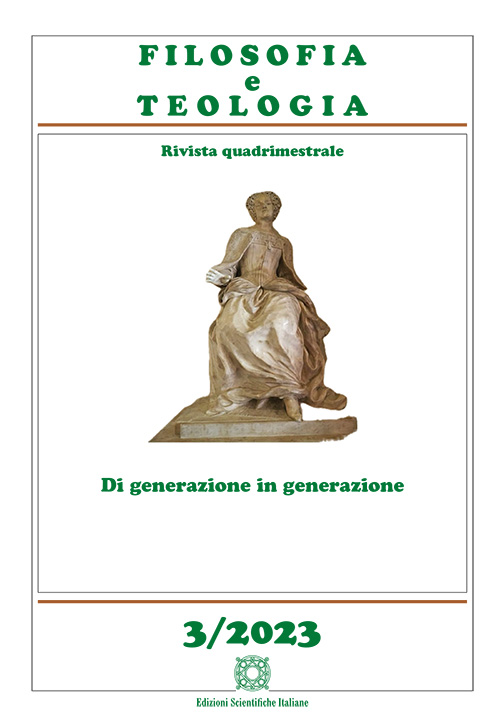Filosofia e Teologia XXXVII, 3 (2023), Di generazione in generazione, pp. 487-499
Il presente contributo propone un’analisi della stringa testuale «un nuovo cielo e una nuova terra» in Ap 21,1 e 2Pt 3,13. Questo peculiare annuncio del novum escatologico, che bilancia il timore degli eventi catastrofici che accompagnano le cose ultime, è inteso nel suo valore di formula letteraria che potenzialmente caratterizza forme letterarie tipicamente apocalittiche (in particolare, la visione e la descrizione degli eventi finali). La ricerca è condotta adottando una prospettiva sia diacronica – indagando la traiettoria dell’impiego della formula da Is 65,17 sino alla letteratura medio-giudaica (4Q434a 2-3) e al corpus neotestamentario – sia sincronica, valutandone la funzione nella macro-struttura dell’Apocalisse e della seconda lettera di Pietro. L’obiettivo dell’analisi è duplice. Nel caso dell’Apocalisse, essa pone in luce la funzione e il significato di questa specifica formula, che annuncia un rinnovamento cosmologico. Nel caso di 2 Pietro, lo studio dell’uso di forme letterarie apocalittiche in un’epistola permette una maggiore comprensione delle modalità di circolazione di questa micro-unità letteraria nello spazio letterario protocristiano.
Parole chiave: Critica delle forme; Apocalisse; 2 Pietro; Apocalittica; Escatologia
This contribution proposes an analysis of the textual string «a new heaven and a new earth» occurring in Rev 21:1 and 2 Pet 3:13. This peculiar announcement of the eschatological novum, which balances the fear of the catastrophic events coming with the “last things,” is here understood as a literary formula. Potentially, it distinguishes typical literary forms (in particular, a vision and a description of the final events). The research adopts both a diachronic perspective –investigating the origin of the formula in Is 65:17 and its revival in the Dead Sea Scrolls (4Q434a 2-3) and the New Testament corpus – and a synchronic one, evaluating its function in the macro-structure of Revelation and 2 Peter. The aim of the analysis is twofold. First, in the case of Revelation, it sheds light on the function and meaning of this formula, announcing a cosmological renewal, in relation to the apocalyptic genre. Second, in the case of 2 Peter, the study of the use of apocalyptic literary forms in an epistle allows us to better grasp the circulation modalities of this literary micro-unit in the early Christian literary world.
Keywords: Form Criticism; Revelation; 2 Peter; Apocalypticism; Eschatology

